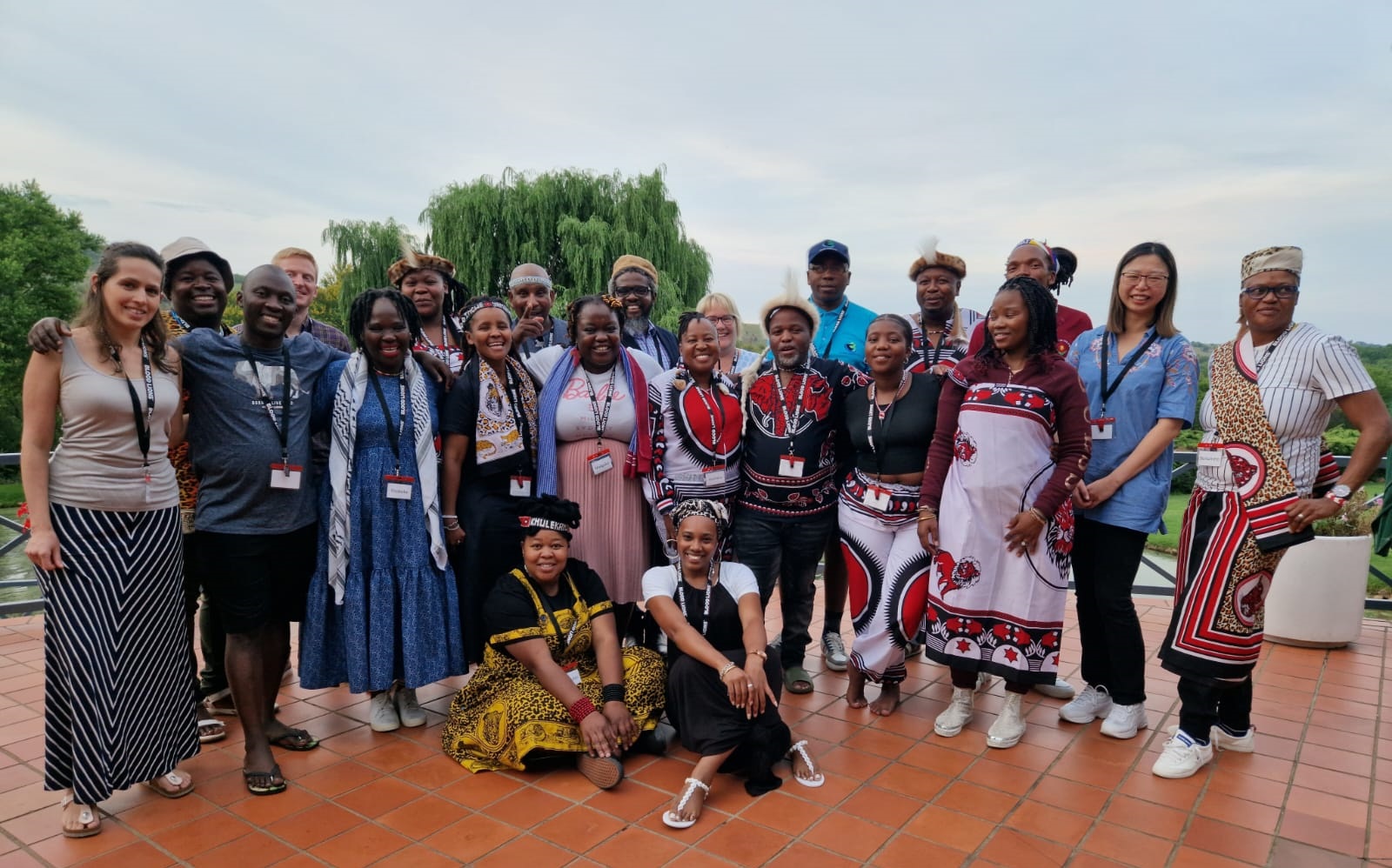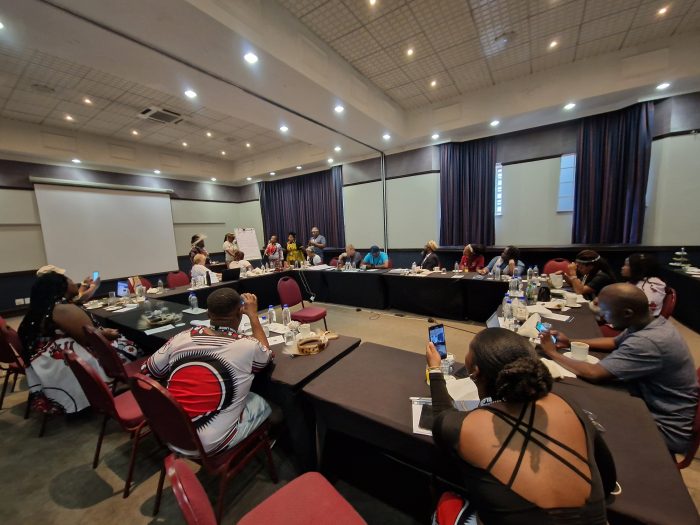Finding common ground between NGOs and traditional health practitioners in South Africa
“We are the guardians of the environment. Talk to us and involve us if you want to save the wildlife.”
This is the message repeated loud and clear by a leading group of South African traditional health practitioners, or THPs.
Over the course of three days, EIA and South African NGO Blood Lions engaged in passionate, honest, expansive and, above all, deeply enlightening discussions with 20 senior and new THPs from across five of South Africa’s nine provinces.
Our goals were to start a dialogue with THPs to better understand their practices, learn about their aspirations for, and the challenges facing, traditional medicine in South Africa and explain what we strive to achieve as conservation NGOs to see if and how the conservation and traditional African medicine communities could work together to protect our shared environment.

Attendees at the roundtable (c) EIA
For thousands of years, traditional medicine has been a cultural, health and spiritual cornerstone for communities across the African continent. THPs come from a wide variety of backgrounds, but all have received “the calling” from their ancestors. THPs utilise plant and animal materials combined with ancestral knowledge systems to address both physical ailments and the spiritual needs of their patients.
Because THPs rely on materials from the natural world, there is an obvious overlap between the goals of the conservation and traditional African medicine sectors when it comes to protecting ecosystems that support healthy populations of animal and plant species.
The THP sector is complex, mostly unregulated and remains poorly understood. It is often subject to misinformed assumptions by outsiders, in particular those associated with the Global North. At times, this has included wildlife conservation organisations concerned about the potential negative impacts of using threatened species in traditional treatments.
Among the many important issues discussed, several key points and themes emerged.

The roundtable in session (c) EIA
The THPs at November’s roundtable were acutely aware of the major threats to wildlife in South Africa, including the poaching and trafficking of wildlife by organised crime groups. An important concern raised was the difficulty in accessing certain ingredients (known as muthi) in a legal and sustainable way, which in turn is closely linked to issues of equity and ethics when it comes to the use of South Africa’s wildlife. This is especially true when it comes to use by relatively wealthy South Africans and foreign nationals for activities such as game ranching, private reserve ownership, trophy hunting, etcetera, compared to use by and available to indigenous communities.
THPs stressed that while wildlife products are used in traditional African medicine, threatened and/or protected species do not typically constitute a significant proportion of muthi used in common remedies and, when used, are often in very small amounts. They also highlighted that certain wildlife parts – such as bones – can be passed down from one practitioner to another over generations, thereby avoiding the need for new offtake of wildlife. The THPs clearly expressed their view that narratives describing “traditional healers” driving species to extinction are unfounded, unfair and harmful.
Nevertheless, the opaque nature of muthi markets and suppliers – which have emerged in no small part due to restrictions on access and severely reduced agency for THPs when it comes to sustainably and legally acquiring ingredients – is a key challenge for the traditional African medicine and conservation sectors in South Africa.
Many issues raised during the roundtable were complicated, interlinked and dealt with larger political and societal issues in South Africa as a country still grappling with the challenge of creating a fair, transparent, equitable and well-functioning post-apartheid society.
Successful wildlife conservation depends on thriving communities and as such we cannot ignore challenges such as governance, dissonance between traditional and legislative/administrative structures and representation. THPs have often been left out of decision-making processes or, if included, consultation has been treated merely as a box-ticking exercise.
Perhaps the most important point to come from the meeting is that the THPs desire and are ready to take ownership of environmental issues connected to traditional African medicine. Whether that be local grassroots initiatives such as river clean-ups or addressing more challenging issues such as inscrutable muthi supply chains, the THPs who attended the roundtable are eager to do what it takes to more widely establish themselves as respected environmental stewards.
We were inspired by the forthright and productive discussions led by the THPs who attended the roundtable. It is clear that we have a shared interest in protecting the environment for present and future generations and we look forward to continuing to cultivate these relationships.
Our organisations are entering the new year excited about the prospects for future collaboration with THPs to safeguard South Africa’s natural and cultural heritage.
• This blog was jointly written by EIA US Senior Wildlife Policy Analyst Taylor Tench, EIA UK Wildlife Campaigner Ceres Kam and Blood Lions Campaign Coordinator Dr Stephanie Klarmann


